Two hundred years after their disappearance, proof of the survival of some survivors of the La Pérouse expedition was discovered on the island of Vanikoro in the Pacific Ocean in 1999. New clues now suggest that some sailors may have managed to leave the island….
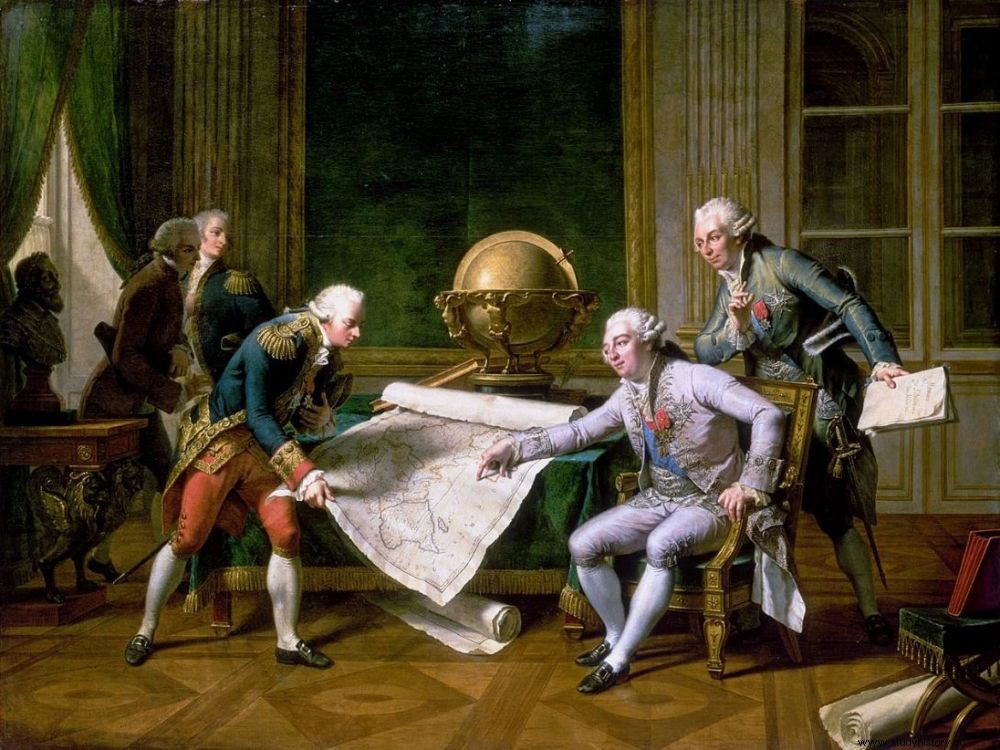
King Louis XVI giving his instructions to the Comte de La Pérouse, for his voyage of exploration around the world, in 1785. Painting by Nicolas Monsiau (1754-1837)
An enigma will perhaps find its epilogue. That of the La Pérouse expedition - named after the Comte de La Pérouse who commanded it - considered the greatest scientific exploration voyage ever organized by France in the 18th th century. Its tragic end in 1788 made a lasting impression, no one really knowing what happened to Jean-François de Galaup, Count of La Pérouse, and his crew after the sinking of the "Astrolabe" and "Boussole" frigates. " on the reefs of Vanikoro, in the Solomon Islands (Pacific Ocean). As legend has it, Louis XVI, personally involved in the adventure, was still worried about their fate on the eve of his execution, in 1793... In an article recently published in the scientific journal The Journal of Pacific History* , Garry Hitchcock recounts having found documents from the 19th th century that could concern French navigators after the tragedy. According to him, some of those who would have survived the sinking of Vanikoro would have finally managed to leave the island on a makeshift boat according to a press article published in 1818…. "This announcement is very interesting and goes much further than what I had been able to do following my discoveries in this Pacific island », Recognizes Jean-Christophe Galipaud, IRD archaeologist joined by Sciences et Avenir.
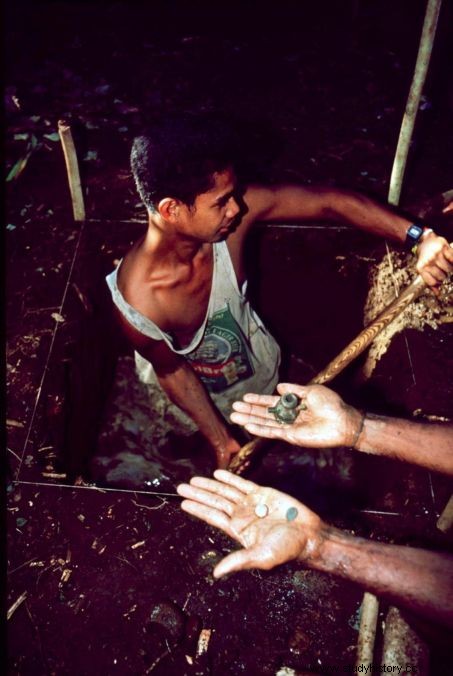
The Vanikoro Island excavation site in November 2000, proof of the presence of survivors of the sinking of the frigates of the La Pérouse expedition. © Pierre Larue/AFP
In 1999, this researcher had indeed been the first to have exhumed on the beach of Paiou, in Vanikoro, the foundations of a fort containing remains from the two ships of the expedition. In this "camp of the French", Jean-Christophe Galipaud had collected fragments of measuring instruments, a compass of proportion, flints, musket balls, porcelain, nails and bottles. So many material proofs which thus put an end to two centuries of enigma. Men had survived shipwrecks. Subsequently, in 2004, French archaeologists from the Drassm (Department of Underwater and Underwater Archaeological Research) had come up from the poop deck of one of the two wrecks (which it had been impossible to identify as they were encrusted in the coral), a human skeleton.
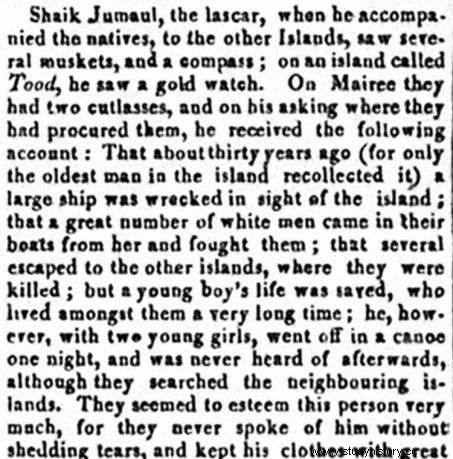
Excerpt from the "Madras Courier" of December 29, 1818. © Garry Hitchcock.
The 1818 "Courrier de Madras" press article found by the Australian researcher "relates how, in September of that year, the ships 'Claudine " and "Mary " who sailed from Sydney towards Calcutta, dropped anchor on Murray Island, in the Torres Strait archipelago and rescued an Indian sailor, Shaik Jumaul, who had survived a shipwreck, four years ago writes Garry Hitchcock. During the repatriation trip, while answering the questions of his rescuers, the survivor recounts that he saw on this island swords and muskets "made differently from those of the English, in addition to a gold watch and a compass »…
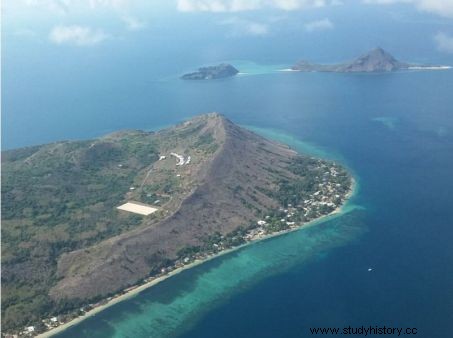
Aerial view of Murray Island in the Torres Strait, which separates northern Australia from the island of New Guinea. © Garry Hitchcock
Also according to him, the inhabitants of Murray Island, would have explained to him that 30 years earlier, a boat had run aground on the Great Barrier Reef, approaching the island. All the white men on the boat had then been killed by the islanders, with the exception of a young boy spared, whom they would have raised… For the Australian researcher, these details coincide with ancestral stories of the departure of a boat makeshift with survivors of the La Pérouse expedition, from Vanikoro... "With these revelations, a new lead is to be followed and perhaps discoveries to be made on Murray Island enthuses Jean-Christophe Galipaud.
Shipping
Leaving Brest in August 1785, two frigates - the Compass and the Astrolabe - commanded by François de Galaup de La Pérouse and his friend Fleuriot de Langle, were to begin a long four-year journey beyond Cape Horn with, to their board, scholars, botanists and astronomers. Their mission was to map the Earth and explore new sea routes to compete with the English. At a time of colonial ambitions and rivalries, this trip to the Pacific followed in the footsteps of the famous explorer James Cook, director of British expeditions from 1766. Arrived off Botany Bay in Sydney (Australia) in 1788, La Pérouse explains in a last letter that he thought he was leaving the Pacific Ocean through the Torres Strait, to be back in France in… 1789. But he disappeared at sea with his ships. Several expeditions, including that of Admiral d'Entrecasteaux in 1791, or that of Dumont D'Urville around 1827, were launched to try to find traces of the 220 crewmen. In vain. It will be necessary to wait until 1964, so that the National Navy and the Admiral of Brossard discover the ship of La Pérouse, and 1999 so that traces of some survivors are found in the lagoon of the island of Vanikoro by Jean-Christophe Galipaud and the Salomon Association divers.
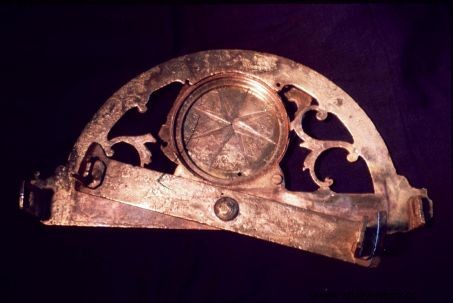
A graphometer found in the wrecks of the La Pérouse expedition, off Vanikoro. © Pierre Larue/AFP
Vanikoro
It is to Peter Dillon, Irish navigator, that we owe the first discovery of the traces of the La Pérouse expedition in 1826, by discovering objects of European origin in Tikopia, in the Solomon Islands. They had been brought back by inhabitants of a neighboring island, Vanikoro. Traveling there in 1827, Dillon discovered what had happened to the two ships of the Astrolabe and the Compass expedition.
